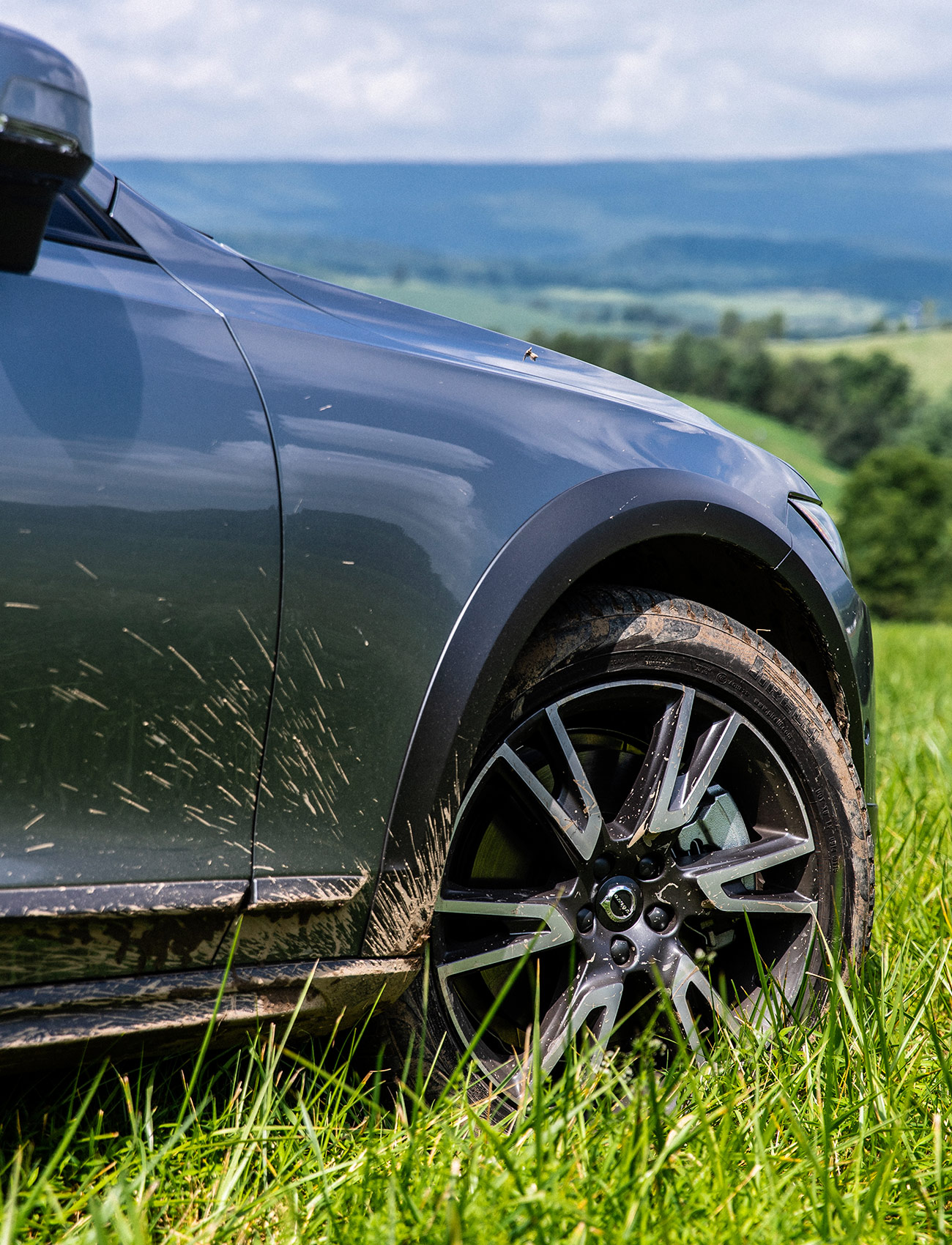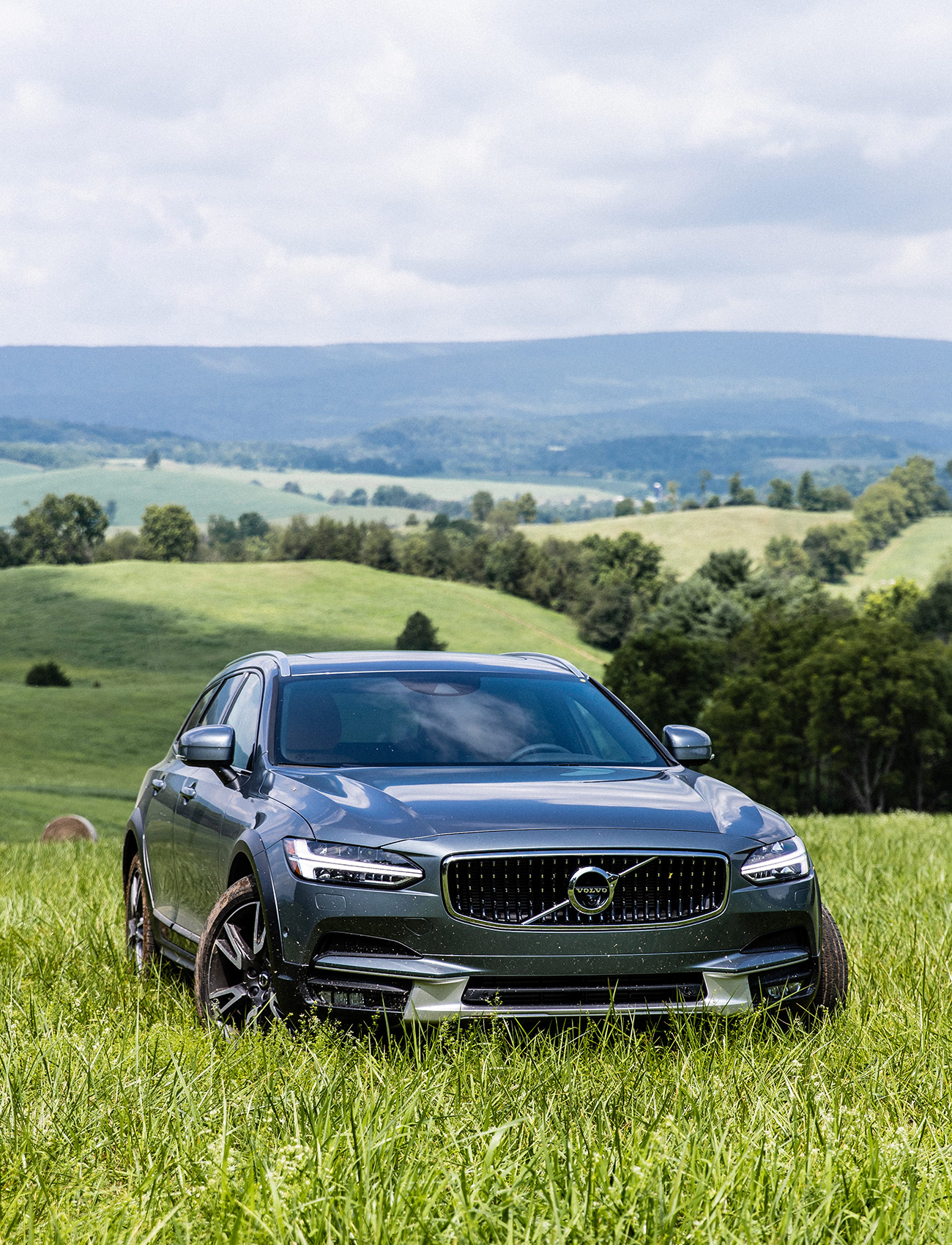First, an admission in the interest of transparency: I have called a lot of cars “the best” in their respective categories, and some of those have been Volvos. The automotive journalism community at large is prone to being pretty hyperbolic, myself included. But this is not one of those times. I truly believe the Volvo V90 Cross Country is the singularly most ideal car available.
The beefed-up, “off-road” Volvo V90 CC wagon ($52,300, base) lies at the intersection of supreme comfort, capability, technology, safety and cost. It is not an inexpensive car, but for what you get, even in the very basic configuration, it’s a bargain.
Comfort
It’s a reasonable assumption that anyone who owns a car will need to transport more than two adults at any given time. I daydream about sports-car-as-my-only-car ownership as much as the next person but there’s a reason it’s only a fantasy for most of us. Between friends and kids and dogs and other passengers, a usable backseat is a must. The V90, which is in the most basic terms an S90 sedan with added 44 cubic-foot cargo space out back, features enough space in back for full-size human people (technically, five). For comparison, the V90 has the same amount of rear legroom as a Mercedes-Benz E-Class Wagon (36.9 inches and 36.8 inches, respectively). More on that car later.
The level of luxury that Volvo conveys throughout its lineup is rather unparalleled for the money. There are other upscale, lesser-expensive offerings from other brands (premium Ford Explorers are very nice inside; GMC makes awesome interiors; Mazda is absolutely killing it with its price-to-luxury ratio), but the kind of luxury you experience in a Volvo is on another level: the Scandinavian, minimalist approach that is widely loved. High-grade materials, unobtrusive shapes, intuitive and ergonomic controls, an airy cabin — all those elements combine to form a very distinct kind of tangible luxury that I think goes further than straightforward plushness you might find elsewhere.

Technology
I find Volvo’s infotainment system — dubbed Sensus — to be fantastic. Its main nine-inch touchscreen is organized much like a smartphone operating interface, which is to say you swipe from left to right to access different clusters of (digital) buttons and functions. The navigation and media controls, which can be made full-screen or stacked in a modular fashion, are intuitive and pleasant to look at.
Further, Volvo’s Pilot Assist technology is superb, as far as semi-autonomous driving is concerned. On a recent trip to the middle of Pennsylvania, pictured here, I drove 10 hours in a single day. In the middle, I spent about six or more hours gallivanting around in the outdoors. I didn’t have any issue whatsoever with concentration or fatigue because Drive Assist, also severely intuitive and well-calibrated for ease-of-use, was able to supplement my driving. Various other manufacturers offer similar tech — Mercedes-Benz Active Steering Assist, for instance — but I find Volvo’s to be smoothest and smartest I’ve tested. It is gentle, unobtrusive, intelligent and suits drivers who are patient, seamlessly orchestrating radar-guided cruise control, lane keeping and blind spot detection as well as passing functions in satisfying harmony.
Capability and Safety
This is where the “CC” come in to play. Beefing up the already splendid V90 station wagon is Volvo’s signature take on all-wheel-drive ruggedness: the Cross Country. Volvo equips their Cross Country vehicles (the V60, the V90’s smaller sibling, was just announced this week) with extra tough cladding where it counts, slightly elevated ride heights and off-road tech like Hill Descent Control, which modulates downward, off-road progress automatically. As you can see, I braved some fields and trails in a V90. It was terrific in all situations, even with all-season tires. A lot of makers offer really great AWD wagons, but the degree of refinement in Volvo’s Cross Country lineup does it for me.
Volvo is, of course, an automotive safety standard bearer — say the name and most of us likely think of dorky safety-obsessed dads. The brand calls its current suite of technology aids Intellisafe. Standard on all its cars is a system that identifies, tracks, warns of and automatically avoids (if necessary) vehicles, pedestrians and animals. Pilot Assist, as I mentioned above, can take over driving duties for a few seconds at a time, though it is officially intended as a supplement to your own driving, not a replacement. A high-strength frame, pre-collision tech and more are integrated into the brand’s cars.
Styling
Subjective, without a doubt. But then again so is this entire argument. I think, though, that if I were to conduct a poll simply asking “Do You Think the Volvo V90 CC Is Good Looking?” I would get a 90-plus-percent positive response rate. I’d put money on that. Volvo design language in its current form is, for my money, exceptional. The lines and shapes and proportions are magical, especially considering that truly gorgeous cars normally cost far more. If you’re an aesthete of any kind and shopping for a new car, Volvo should literally be at the absolute top of your list.

Cost
$60,000 is a shitload of money — it’s the median income of an entire household in the US — and it should buy you something massively significant. The Volvo V90 CC can be very well optioned at around $60,000.
Compared to the base Subaru Outback ($26,345), a similar type of car, at just over $52,300, base MSRP, the V90 CC costs twice as much. But for that money, you get a lot more car as standard, so I don’t consider it a really fair comparison. As contributor Tyler Duffy recently pointed out, the Outback is the best value family car by a slim margin. I find it reasonable to think that an “ideal” car should be inherently more premium, like the Volvo.
It would be more accurate to compare the V90 CC to its most direct competition, the base Mercedes-Benz E-Class 4Matic Wagon ($63,050), is $7,000 more than a similarly equipped V90 CC. I get into the nitty-gritty below but suffice it to say, as both are optioned similarly, the cost delta stays the same at best and increases if you’re aggressive.
I want to make two things really clear. First, I am in no way picking on Mercedes-Benz; it just happens to make an honest V90 CC competitor. The E-Class Wagon is a tremendous car, and largely deserves the prestige it garners. Secondly, these are in some fundamental ways, different vehicles meant for different things. The Volvo is for a more reserved and practical person like me; the Mercedes-Benz is for someone with more cash who wants more of a luxe driving experience. But, that kind of drives (heh) home my point. Volvo covers all the necessary bases, and does so really, really well.
Verdict
This is where my argument hinges. In terms of all the points I’ve made up to now and especially in terms of bang-for-your-buck, Volvo comes out ahead; in fact, the Volvo is an actual bargain. Most of that increased price, then, is branding: you’ll simply pay more to have a three-pointed star on the hood of your car than you would the Swedish maker’s emblem.
Which is where I suspect you’ll choose to accept or dismiss this argument. It’s just one dude’s opinion, but the V90 CC is definitely my ideal car. Agree/disagree? Shoot me an email and share why.
Cost Comparison: V90 CC and E-Class 4Matic Wagon:
Your results may vary, but I tried my best to compare the E-Class and V90 CC in each brand’s online car configurator, selecting similar options and trim levels to make an admittedly less frugal but deeply desirable final product. I ended up with a $72,085 V90 CC and an $81,555 E-Class Wagon.
I started with the T6 AWD V90 CC ($56,100, base) which features a 316-horsepower, 2.0-liter turbocharged and supercharged inline-four, and added brown paint and 20-inch wheels, and the three available packages: Luxury ($4,900), Convenience ($1,950) and Protection Package Premier ($535). I also selected some cool options: a head-up display ($900), Bowers & Wilkins sound system ($3,200), the Premium Air Suspension ($1,200) and a retractable trailer hitch (1,310).
For the Mercedes-Benz E-Class Wagon ($63,050, base), I stuck with the standard 3.0-liter twin-turbo V6 with AWD and added brown paint ($720) and 19-inch wheels ($500). Upgraded leather and trim plus the warmth and comfort package ran $2,820; the Entertainment and Convenience package (power seats, dual-zone climate control, Navigation, etc.) is grouped with the Premium 3 Package (heated seats, Burmester sound system, Active Steering Assist, etc.) and runs $10,650. Adding the adjustable suspension and rear side-impact airbags added $2,320.
Volvo loaned us a V90 CC to drive and photograph.

